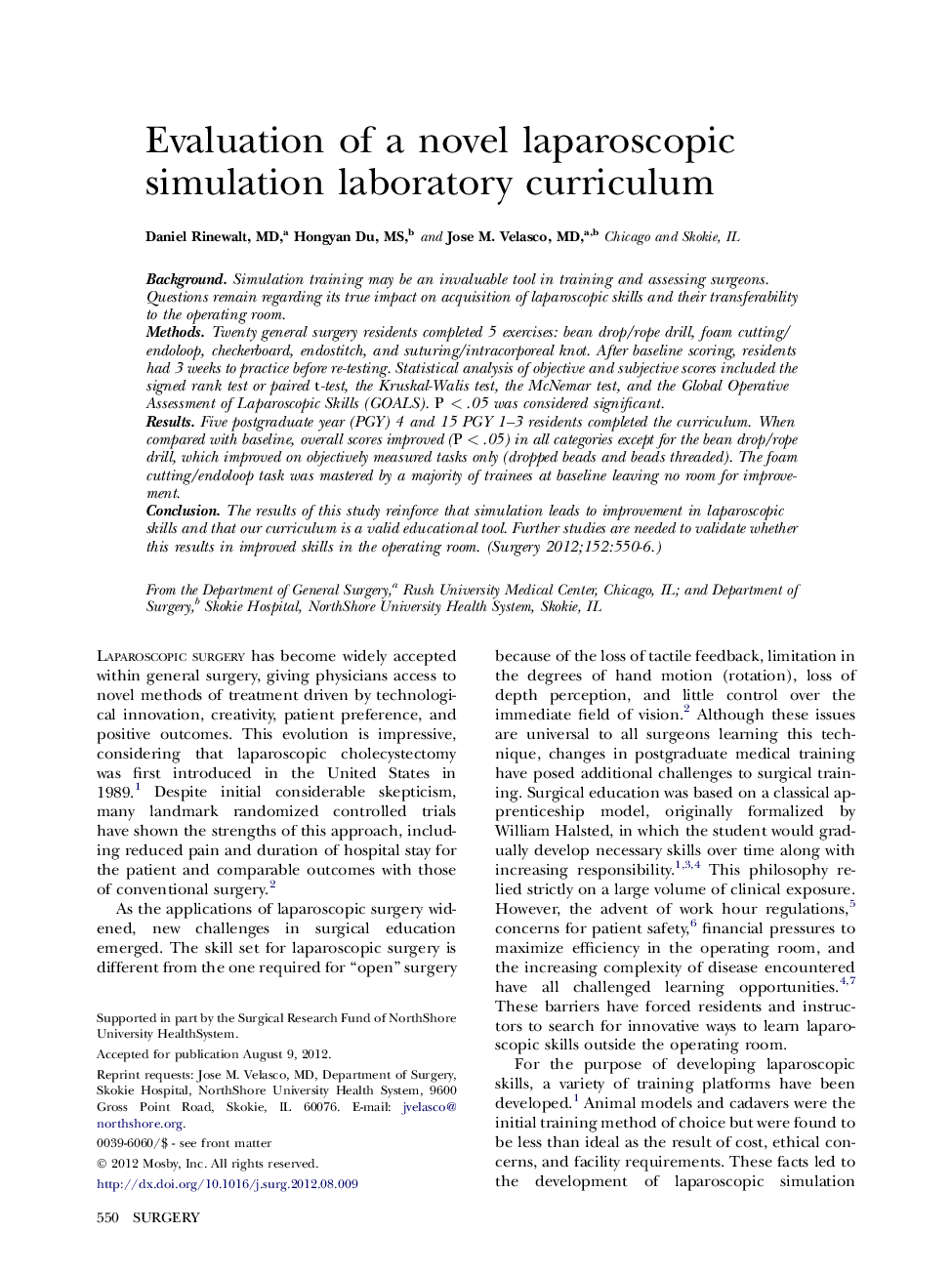| Article ID | Journal | Published Year | Pages | File Type |
|---|---|---|---|---|
| 4307821 | Surgery | 2012 | 7 Pages |
BackgroundSimulation training may be an invaluable tool in training and assessing surgeons. Questions remain regarding its true impact on acquisition of laparoscopic skills and their transferability to the operating room.MethodsTwenty general surgery residents completed 5 exercises: bean drop/rope drill, foam cutting/endoloop, checkerboard, endostitch, and suturing/intracorporeal knot. After baseline scoring, residents had 3 weeks to practice before re-testing. Statistical analysis of objective and subjective scores included the signed rank test or paired t-test, the Kruskal-Walis test, the McNemar test, and the Global Operative Assessment of Laparoscopic Skills (GOALS). P < .05 was considered significant.ResultsFive postgraduate year (PGY) 4 and 15 PGY 1–3 residents completed the curriculum. When compared with baseline, overall scores improved (P < .05) in all categories except for the bean drop/rope drill, which improved on objectively measured tasks only (dropped beads and beads threaded). The foam cutting/endoloop task was mastered by a majority of trainees at baseline leaving no room for improvement.ConclusionThe results of this study reinforce that simulation leads to improvement in laparoscopic skills and that our curriculum is a valid educational tool. Further studies are needed to validate whether this results in improved skills in the operating room.
